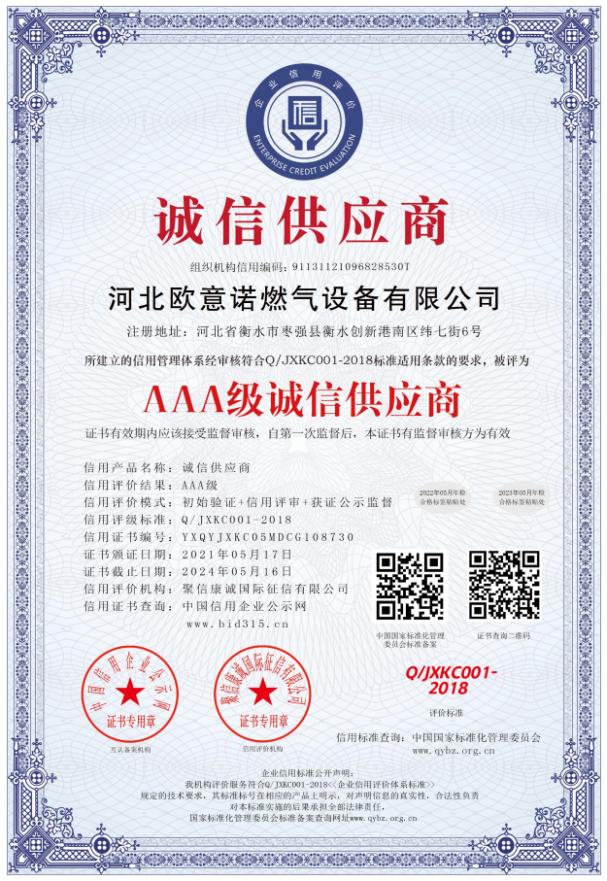
Sep . 01, 2024 03:19
Back to list
Gas Pressure Reducers - Efficient Solutions for Safe Gas Management
Understanding Gas Pressure Regulators
Gas pressure regulators are essential devices in various industries and applications, ensuring the safe and efficient use of gases. Whether in residential heating systems, gas-powered equipment, or industrial processes, regulators play a crucial role in controlling and maintaining the pressure of gases delivered from storage tanks or pipelines.
What is a Gas Pressure Regulator?
A gas pressure regulator is a mechanical device used to control the pressure of gas flowing from a higher-pressure source to a lower-pressure outlet. The primary function of a regulator is to reduce the pressure to a predetermined level and maintain it consistently. This is vital for the safe operation of appliances that rely on gas, as excessive pressure can lead to equipment malfunction or hazardous situations.
How Does a Gas Pressure Regulator Work?
Gas pressure regulators operate based on principles of physics, primarily using a diaphragm mechanism. When gas enters the regulator, it exerts pressure against a diaphragm that moves according to the pressure changes. The movement of the diaphragm opens or closes a valve that adjusts the flow of gas to maintain a set output pressure.
There are two main types of regulators single-stage and multi-stage. Single-stage regulators are typically used for applications where high precision is not critical, as they reduce pressure in one step. Multi-stage regulators, on the other hand, gradually reduce pressure in two or more stages, providing more stable and precise pressure control, making them suitable for more sensitive applications.
.
Gas pressure regulators are utilized in numerous fields, including
مخفض ضغط الغاز

1. Residential Uses In home heating systems and gas stoves, regulators ensure that the supply of natural gas or propane remains at safe operating pressures. This prevents dangerous situations like gas leaks or explosions.
2. Industrial Applications Industries that use gases such as oxygen, nitrogen, and various hydrocarbons depend on regulators to ensure that the gas delivered to processes or machinery is at the appropriate pressure levels for precise operations.
3. Medical Field In healthcare, regulators are vital for controlling the flow and pressure of medical gases, such as oxygen in hospitals and home care settings, ensuring patient safety and effective treatment.
4. Food Processing In the food industry, gas regulators are essential for brewing, fermentation, and other processes where specific gas pressures must be maintained to comply with safety and quality standards.
Importance of Regular Maintenance
Maintaining gas pressure regulators is crucial for safety and efficiency. Over time, wear and tear can affect their performance, leading to incorrect pressure regulation. Regular inspections and maintenance checks can help identify potential issues before they become serious problems. This includes checking for leaks, ensuring the diaphragm is functioning correctly, and replacing any worn-out components.
Conclusion
Gas pressure regulators are vital devices that play a key role in the safe and efficient use of gases across various sectors. Understanding their function, types, and importance can help users ensure their systems operate safely and effectively. Regular maintenance and proper installation are crucial to maximizing the lifespan and performance of these essential devices. As technology advances, gas pressure regulators are also evolving, offering more sophisticated solutions for an increasing range of applications, thus enhancing safety and efficiency in gas usage.
Next:
Latest news
-
Safety Valve Spring-Loaded Design Overpressure ProtectionNewsJul.25,2025
-
Precision Voltage Regulator AC5 Accuracy Grade PerformanceNewsJul.25,2025
-
Natural Gas Pressure Regulating Skid Industrial Pipeline ApplicationsNewsJul.25,2025
-
Natural Gas Filter Stainless Steel Mesh Element DesignNewsJul.25,2025
-
Gas Pressure Regulator Valve Direct-Acting Spring-Loaded DesignNewsJul.25,2025
-
Decompression Equipment Multi-Stage Heat Exchange System DesignNewsJul.25,2025

